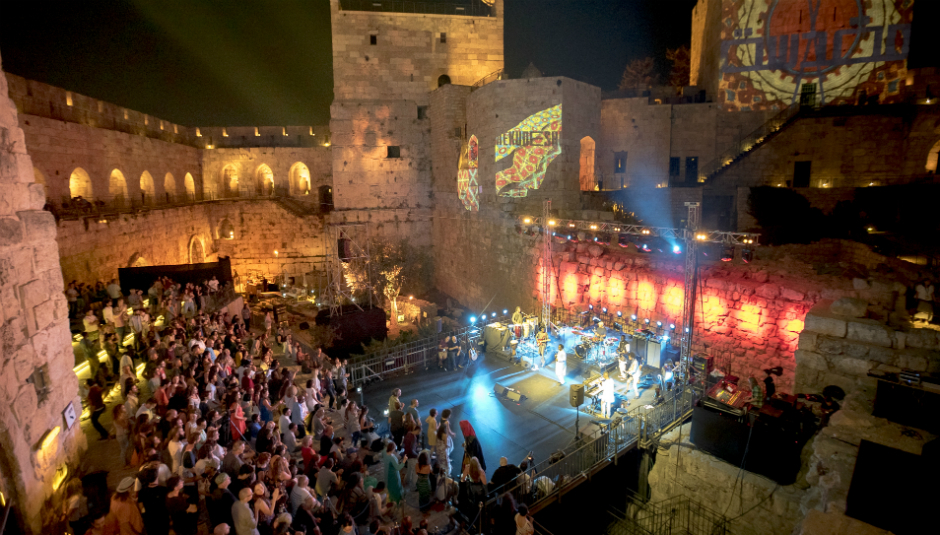Off in the distance, two muffled thuds slam through the thick midday air as we gaze down on the Western Wall, Judaism’s holiest site. 'That’s a car backfiring', explains our tour guide in a flash, as she briefly diverts from telling us about the history of the Temple Mount. 'Anyway, it’s a long way off'. My mind turns to the stark headlines of that morning’s paper: 'Two police hurt, one seriously, in Jerusalem stabbing; assailant shot'.
Welcome to Jerusalem, a regular flashpoint for intercultural tensions and the front line between the state of Israel and the Palestinian territories. I’m in the historic divided capital as part of a small delegation of journalists to explore what life is like for artists on both sides of the divide, as well as to experience Mekudeshet, a week-long music festival that’s part of the Jerusalem Season of Culture, a month-long programme of art, theatre, and music held at spaces around the city. JSOC, now in its sixth year, presents artists from across the Middle East, Europe and Africa and aims to demonstrate that the city can be - even if only for a moment - a place from which a call for tolerance, inclusivity and cooperation can come.
While Mekudeshet and JSOC are proudly politically neutral, one of the first things you learn on speaking to anyone here (associated with the festival or otherwise) is that every word in Jerusalem is loaded; one person’s ‘occupation’ is another’s ‘liberation’. The situation on the ground is both extremely nuanced and complex. This reflects the second thing newcomers learn, I am told - the Hebrew word ‘balagan’: a disorderly, confusing, and/or overwhelming situation.
With all this spinning round my head, I catch up with musician and Mekudeshet Artistic Manager Gil Ron Shama to discuss how music can effect change. For Gil, music offers an opportunity to take a step back from daily life and facilitate engagement between the conflict’s two sides:
“Listening is one of the hardest things for humanity. It’s one of the biggest reasons for wars, violence, and territorialism”, he says passionately. “Many times we don’t really listen. When different cultures meet, they tune into each other. Music carries all these small things without you being conscious of it.”
Gil speaks from experience. For many years he was one of the lead singers in Sheva, a band unique at the time in Israel in incorporating both Muslim and Jewish members and drawing influence from both Hebrew and Arabic texts. His aim is a laudable one, but is it realistic? Asked perhaps a little too directly about the divide, he gently corrects my reading of the situation as a dichotomy:
'There’s no need to unify. This is a beautiful Western opinion', he says with a smile. 'I don’t call it ignorance because we, the Middle East, made you believe the big lie that we’re separated - [both Jews and Arabs] have the same roots. Our languages are twinned sisters. One man says ‘Eloah’, another ‘Allah’. Allah/Eloah - there’s something similar there.'
That evening I see Gil from a distance at a concert in the spectacular setting of the Tower of David, a semi-ruined citadel by the Jaffa Gate in the Old City. Looking ice cool in aviators and his trademark white turban, he sways along to the music, arms aloft and lost in the rhythm.
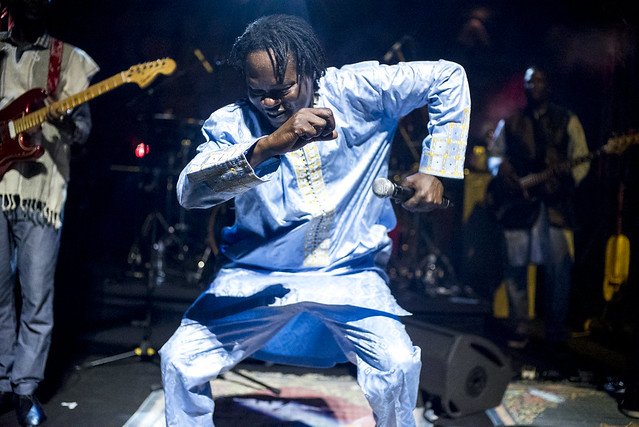
On stage is Senegalese singer and guitarist Baaba Maal. A devout Muslim, Maal is making his Israeli debut at this year’s festival, defying the cultural boycott called for by the Boycott, Divestment and Sanctions (BDS) movement. Singing primarily in the regional language of Pulaar, his tunes are crammed full of frenzied percussion work and funky slap-bass.
'Our songs are about love, education and projecting ourselves into the future', Maal says optimistically from the stage during a break in the set. 'We need to help human beings get back their dignity'.
It’s a seductive narrative, and the capacity audience cheer his vision passionately but - call me cynical - I have my doubts over whether a few well-intentioned tunes can put a stalled peace process back on the rails. From a musical standpoint, Maal goes down a storm, but I leave the venue that evening wondering if his ambition exceeds what is possible in reality.
The following two days see us get a taste of life in East Jerusalem, on the other side of the porous border that divides the city and separates Israelis from Palestinians. The area is predominantly home to 370,000 ethnic Arabs who are not Israeli citizens but ‘permanent residents’. They exist in a limbo, neither part of Israel, nor part of the Palestinian Territories proper. They have no passport and cannot vote in Knesset (parliament) elections, but pay taxes to the Israeli state.
Our first glimpse of East Jerusalem is as part of Seven Ways to Dissolve Boundaries, a tour-meets-immersive art experience running along the city’s Light Railway which introduces its participants to three residents from a variety of backgrounds. As well as giving a greater sense of the complex nuances and interweaving’s of Jerusalem’s various districts, the tour also offers musical interludes which showcase the intoxicating patchwork of song emerging from this unique place. One tune in particular that catches my ear is by Kutiman, a local producer who creates mixes from material from local musicians found on YouTube. With deft skill, Kutiman stitches them together, one over another - first a Palestinian percussionist pounding away in his living room, then a violinist wailing in the courtyard of an abandoned farm, and lastly a tuba player parping his way around his neighbourhood. It fits together beautifully and is a wonderful musical portrait of the city.
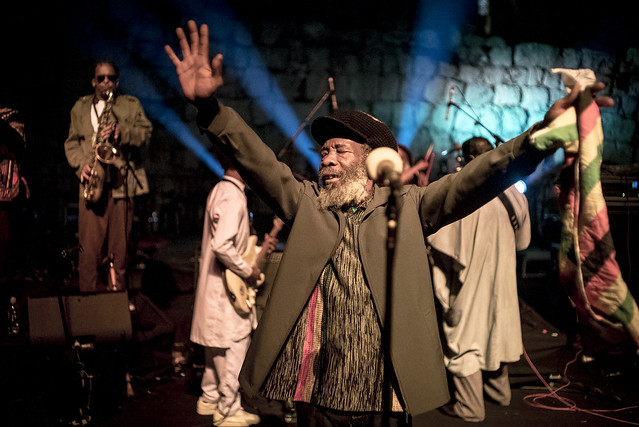
The following day we’re back on the East side of the city with Riman Barakat, a Palestinian who is leading workshops in the predominantly Muslim half of the capital to encourage its population to understand - and possibly one day to integrate - with the predominantly Jewish inhabitants of West Jerusalem. Riman also acts as a community liaison for the festival. We chat over coffee on the terrace of Dar Al-Tifel Al-Arabi, the first public library in the East of the city and a favourite meeting place for Palestinian intellectuals.
How, I wonder, did she find herself in this position?
'It was only after I returned from my studies at the American University in Cairo, that I got to meet Israelis for the first time and got to hear their narrative and began seeing the situation from the other side', she says before telling of the traumas of her own childhood and an education disrupted for six months as a result of the second Intifada (Palestinian uprising).
'The political situation is tiring everyone. People want to connect on a personal level.
'This past year there have been a lot of cultural activities in East Jerusalem”, Riman says when asked about what life is like for artists and music fans on this side of the border seam. “There are also some cool bands in the West Bank, like Apo and the Apostles, who are simply playing in bars and getting young people enjoying themselves, but the challenge here is getting the community to connect with art that is not political'.
It’s rare for Palestinian artists to find success in West Jerusalem and the rest of Israel. Education pays a large part says Riman: “To access the Israeli market, you have to know Hebrew, which is not taught in Palestinian schools”.
Cultural provision in East Jerusalem is relatively small, partly due to the fact that the territory is administered separately from the rest of the West Bank and Gaza with Ramallah as Palestine’s cultural capital. The area’s quarter of a million inhabitants are in many ways cut off from the rest of the Territories.
'There are only a small number of artistic institutions or organisations here”, says Riman. “They receive good funding from the international community but the challenge is facilitating independent artists. They will be important in bringing alternative voices as a counter to the nationalistic narrative.'
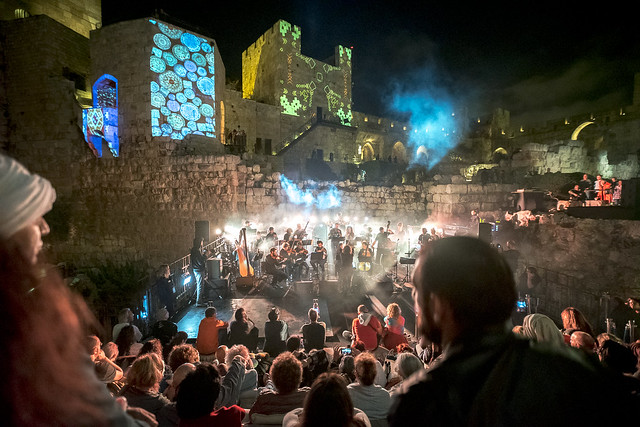
One of the institutions that does exist – and, indeed, is thriving – is Al-Ma’mal, a contemporary art gallery in the Christian Quarter near the Ottoman-era walls. The space opened in 2013 and since then has been driven by the mission to promote the Palestinian arts and culture scene, showing work from the community’s worldwide diaspora including world-renowned conceptual artist Mona Hatoum.
The Western-style gallery is spread over three floors, including two gallery rooms and a large basement which is used as a rehearsal space by local bands. The venue also holds fortnightly concerts, runs an education programme for local schools and hosts regular open mic evenings. These give local musicians the relatively rare opportunity to perform in a well-equipped venue but reflect one of Al-Ma’mal’s core challenges too.
'Some members of the local community are intimidated by coming here', says Education Coordinator Aline Khoury with a sweep of her hand, drawing our attention to the space’s minimalist architecture.
With some of the local population still to be won over, partnerships are important, and the gallery currently partners with four other Palestinian arts institutions from across the West Bank. I notice the impressive list of funders and donors on the wall, including the European Union and UNESCO as well as private Palestinian development funds. Like Mekudeshet, the gallery receives no funding from the local authority (in their case the Palestinian Authority in Ramallah). They also reject funding from the Jerusalem Municipality, under the terms of the BDS boycott.
I stroll around, admiring the current photography exhibition before heading up to the roof where there is a small open-air stage with cafe seating. In the blissful autumnal sun and with a cool breeze blowing, it seems like one of the most perfect gig venues imaginable.
The next few days are a whirlwind of concerts, tours, and hummus. We eat well (too well, perhaps) and as with Baaba Maal, the musical standards are high and the venues impressive. As well as other concerts at the Tower of David by artists including Ethiopian jazz star Mulatu Astatke, we’re treated to performances at the awe-inspiring YMCA building outside the old city walls. The building was built by the same architect that designed the Empire State Building in New York and its neo-Moorish lines look stunning lit up by projections at night.
We’re here for what’s happening inside, however, and one of the weeks finest - and most inspiring - performances at the venue comes from singer Ziv Yehezkel. Yehezkel is both a deeply religious Haredi (Orthodox Jew), and an unrivalled performer of Arabic music who spent his youth listening to his favourite tunes in secret. Tonight he plays alongside Nasreen Qadri, an Arab Israeli who sings primarily in Hebrew, as part of a double bill entitled Cairo-Jerusalem. Both are fine singers, with powerful and emotive vocal styles.
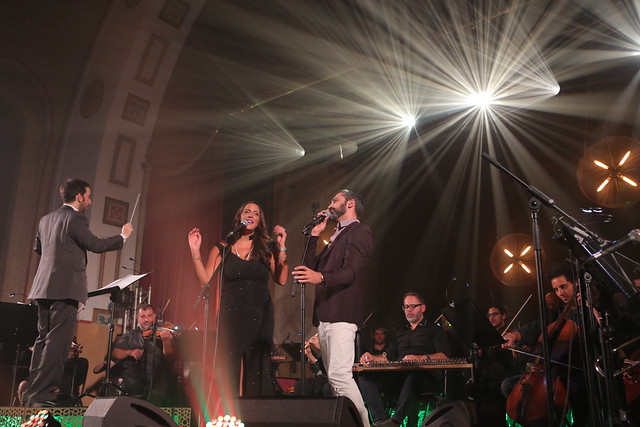
What’s most impressive about their performances however, is the audience reaction. I had wondered how the crowd would respond to the collaboration, but the response is wholly positive. After each song, the audience bring the house down - their clapping in unison remarkable in comparison to the disordered cacophony of applause in the West. I thought back to my conversation with Gil earlier in the week. Perhaps, even for a moment or two, listening really can allow different communities to tune into one another and emphasise similarities over differences. In the time since, I’ve found myself returning to this incredibly powerful moment.
There’s still a long way to go of course. Since 1948, life for both Israelis and Palestinians has been seven decades of tense truces punctuated by occasional and bloody violence. Living on alert has become the tragic new normal, as exemplified by the squads of armed-to-the-teeth Israeli Defence Force soldiers patrolling the bazaars of Jerusalem’s Muslim Quarter, or the outline of a pistol in the pocket of the audience member next to me at the Festival’s closing concert. Provision - both cultural and otherwise - is unequally distributed between the East and the West.
It’s also true that a glance around the week’s audience reveals that it’s drawn primarily from the well-heeled secular Israeli middle class. Festival chiefs have promised that this is their prime focus for next year, but can an artistic dialogue which speaks predominantly to only one side (and the less religious among them, at that) truly affect change?
For many on both sides of this conflict, as well as the wider watching world, peace may seem impossible. For them, a week of art and concerts will not heal open wounds, nor bring together those at the extremes - to say otherwise would be a delusion. But what events and initiatives like Mekudeshet, Al Ma’Mal and the work of activists like Riman do offer is the tiniest, and briefest, glimmer of continued hope and drive for a better future. And as the late Shimon Peres - co-architect of the Oslo Accords - so famously said, perhaps it is giving up on peace that is the real delusion.

